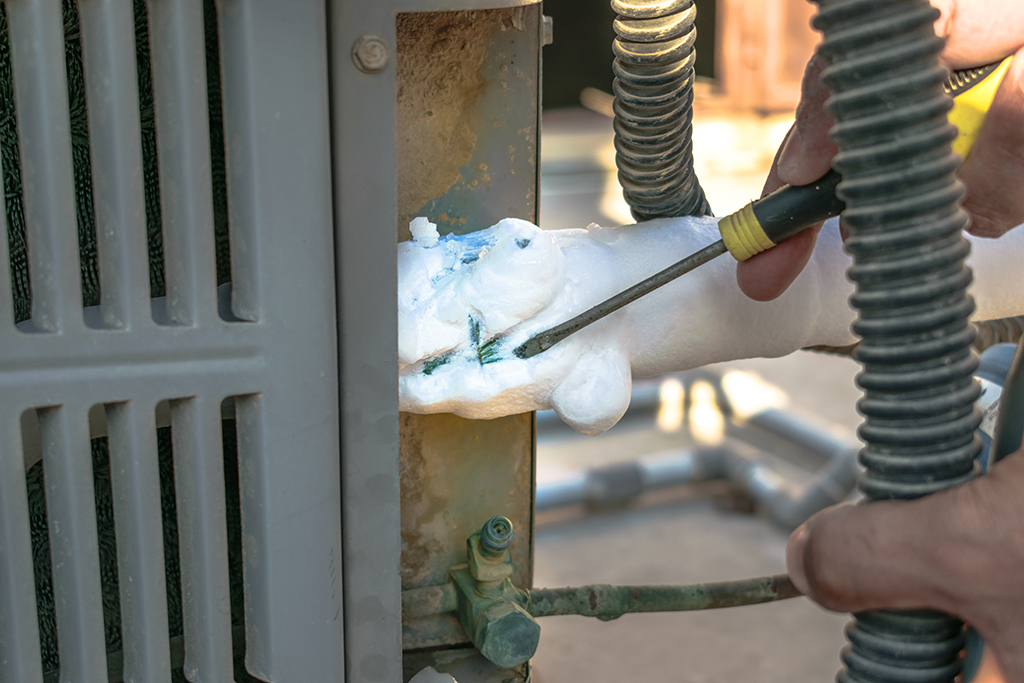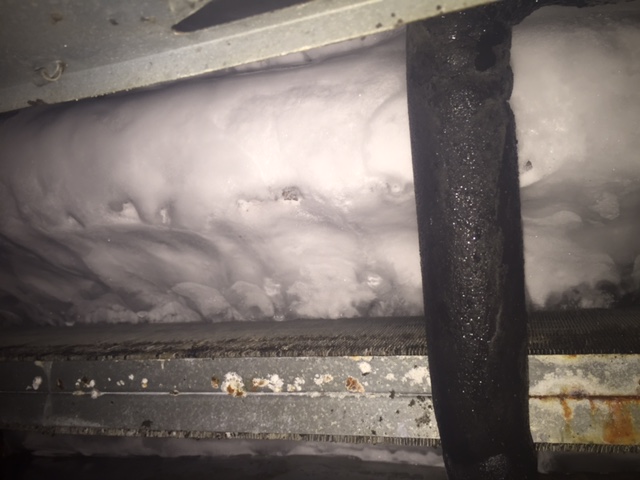We have stumbled upon this post pertaining to What Do I Do If My AC Pipe Is Frozen down the page on the internet and figured it made good sense to write about it with you here.

Intro
Uncovering that your air conditioner pipe is iced up can be concerning, especially during warm summer months when you rely on your air conditioning system one of the most. Comprehending what to do in such a circumstance is essential to stop additional damage to your air conditioning system and ensure your comfort inside your home.
Comprehending the Causes
Several variables can contribute to the cold of an air conditioner pipe. Comprehending these reasons can help you resolve the problem properly.
Absence of Airflow
One typical cause of a frozen air conditioner pipeline is inadequate air flow. When the airflow over the evaporator coil is restricted, it can create the coil to go down below freezing temperature level, bring about ice development on the pipeline.
Low Refrigerant Levels
Insufficient cooling agent levels in your air conditioner system can additionally lead to a frozen pipeline. Low cooling agent degrees can cause the pressure in the system to drop, bring about the cold of dampness on the evaporator coil.
Cold Weather Conditions
In colder environments, freezing temperatures outside can add to the cold of a/c pipelines. If your a/c system is not properly shielded or if there are leakages in the ductwork, chilly air can infiltrate the system, triggering the pipeline to ice up.
Dirty Air Filters
Filthy or stopped up air filters can restrict airflow in your air conditioning system, resulting in various issues, consisting of a frozen pipeline. It's vital to change or clean your air filterings system regularly to make certain correct air flow and prevent ice buildup.
Indicators of a Frozen AC Pipe
Identifying the signs of an icy air conditioning pipe is essential for punctual activity.
Minimized Airflow
If you notice a considerable reduction in airflow from your vents, it could indicate an icy pipeline.
Ice Buildup on the Pipe
Noticeable ice buildup on the refrigerant line or the evaporator coil is a clear indication of a frozen air conditioner pipeline.
Strange Sounds from the Unit
Unusual sounds, such as hissing or gurgling, coming from your a/c device can indicate that there's ice existing on the pipeline.
Immediate Actions to Take
When confronted with an icy a/c pipeline, it's essential to act swiftly to stop additional damage to your cooling system.
Switching off the air conditioning
The first step is to turn off your air conditioning unit to stop the system from running and intensifying the problem.
Looking for Blockages
Inspect the location around the indoor system for any blockages that may be blocking air flow, such as furnishings or curtains.
Thawing the Pipe
You can use mild methods like placing towels taken in cozy water around the frozen pipeline to help thaw it slowly.
Safety nets
Taking safety nets can assist stay clear of future events of a frozen a/c pipe.
Regular Maintenance Checks
Schedule routine upkeep talk to a specialist HVAC specialist to ensure that your a/c system is running efficiently.
Transforming Air Filters
On a regular basis change or cleanse your air filters to stop air flow restrictions and maintain ideal efficiency.
Shielding Exposed Pipes
If your air conditioning pipelines are subjected to cool temperature levels, take into consideration shielding them to prevent freezing during winter season.
Looking For Professional Help
If DIY approaches fail to settle the problem or if you're unclear concerning exactly how to continue, it's best to seek support from a certified HVAC professional.
When DIY Methods Fail
If your efforts to thaw the pipeline or address other issues are unsuccessful, it's time to contact a professional.
Relevance of Hiring a Professional HVAC Technician
A certified HVAC service technician has the proficiency and tools needed to identify and repair concerns with your air conditioner system safely and properly.
Conclusion
Taking care of a frozen AC pipe can be a frustrating experience, but recognizing just how to respond can help reduce damage and recover comfort to your home. By understanding the reasons, acknowledging the signs, and taking punctual activity, you can successfully resolve the problem and protect against future events.
What to Do If Your AC Line Is Frozen
Make Sure All Supply and Return Air Vents Are Open
If you notice problems with airflow, the first thing you should do is check your supply and return vents. Supply vents distribute clean, conditioned air throughout your home. As this air becomes stale, it’s pulled into the return vent, where it’s reconditioned before being sent back out through the supply vent.
When these vents are closed, air won’t flow in the home. Before examining your AC, check the vents in every room and ensure they’re all open.
Check for a Dirty Air Filter
Another possible cause of limited airflow is a dirty air filter. Your air conditioner’s filters catch elements you don’t want to breathe in, such as dirt and dust. Over time, filters can become clogged, ultimately blocking air from flowing in and out. The lack of airflow can then cause the entire coil to freeze and will completely restrict any air from moving through it. The AC may need to be powered off for one to two days to allow the coil to thaw after replacing the filter to allow proper functioning of the unit. This debris can also accumulate on your AC’s evaporator coil, requiring a more serious repair. In general, air filters should be cleaned regularly (about every two weeks).
Assess Your Outdoor Unit
In addition to checking your AC, assessing the outdoor unit is a good idea. Also known as the condensing unit, it works with your interior unit to release heat outside. An issue with the outdoor unit can result in rising internal temperatures.
Overgrown Shrubs or Clogged Leaves
From leaves and twigs to shrubs and debris, there’s no shortage of outdoor elements that can accumulate around your condensing unit. When these elements get lodged inside the unit, they can block airflow. Fortunately, removing the blockage can solve the problem.
Sounds of a Broken Fan
Shrubs and leaves aren’t the only things that can impede your outdoor unit’s airflow. If the fan is broken, the unit won’t be able to properly get rid of heat — which means the internal temperature won’t go down. First, make sure the fan is spinning. If it is, check for the following sounds of a broken fan:
Buzzing Rattling Screeching Hissing Clicking Preventative Measures
Nobody wants to deal with a frozen AC line. In addition to causing problems with your air conditioner, they require professional repairs. On the bright side, there are preventative measures you can take to help ensure this issue doesn’t arise in the first place.
https://www.coopergreenteam.com/blog/what-to-do-if-ac-line-frozen

I stumbled upon that write up about What Do I Do If My AC Pipe Is Frozen when looking around the web. In case you enjoyed our blog posting please remember to pass it around. Thanks a lot for going through it.
Call Today